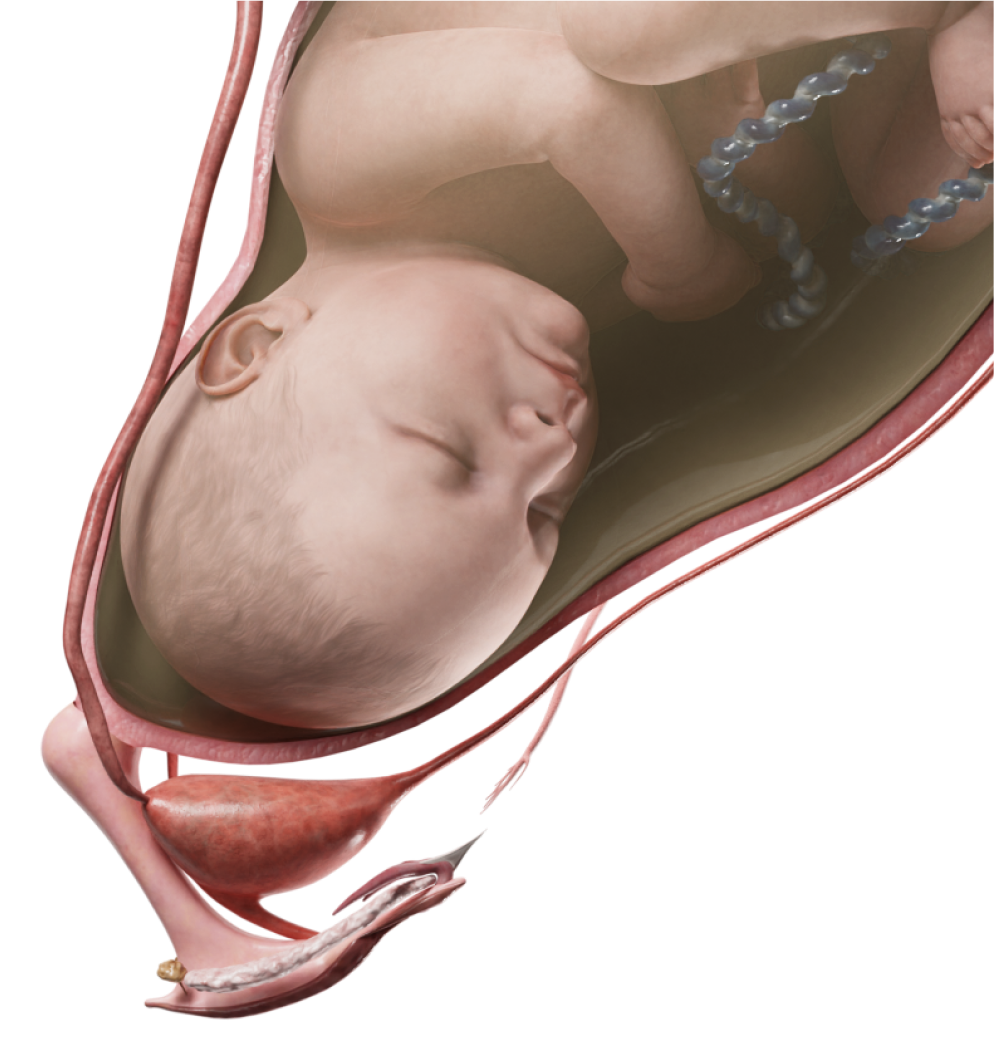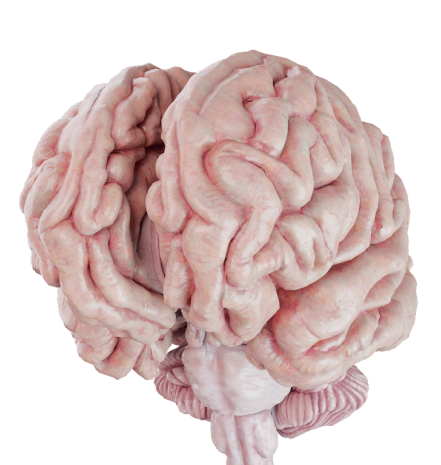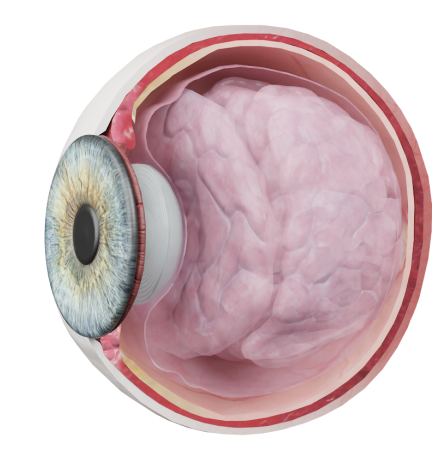Congenital anomalies of external ear
What is Congenital Anomalies of the External Ear?
Congenital anomalies of the external ear include a variety of birth defects that affect the structure of the auricle or the external acoustic meatus, also known as the external auditory canal (EAC). These anomalies can lead not only to cosmetic disfigurement but also to functional impairments.
Embryology
The auricle and the external acoustic meatus are formed prenatally and derived from the ectoderm, specifically the first and second pharyngeal clefts. The development of the auricle begins around week 5 of gestation, when the first and second pharyngeal arches proliferate, resulting in six prominences.
Subsequently, these proliferations, or auricular hillocks, form the six typical parts of the auricle: the tragus, the crus of the helix, the helix, the triangular fossa, and the antihelix. During week 28 of gestation, the EAC develops from the first pharyngeal cleft as a result of invagination of the ectoderm epithelium.
Congenital anomalies of the external ear can be caused by genetic mutations (approximately 15 %) and/or exposure to environmental teratogens. The incidence rate of these birth defects is 1:7,000–15,000 newborns, with a higher prevalence in males (2–2.5 times higher). The majority of congenital malformations of the ear are associated with genetic disorders that follow a pattern of autosomal recessive inheritance, such as Konigsmark syndrome, Moebius syndrome, Treacher-Collins syndrome, etc.
Anatomy
The auricle is a predominantly cartilaginous structure, with the lobule being the only noncartilaginous part composed of adipose tissues. The skin adheres tightly to the cartilage on the anterior surface of the auricle and loosely on its posterior surface. The auricular muscles are reduced.
The auricle is specifically shaped to collect and direct sound waves from the environment. It is characterized by several depressions and ridges, such as the tragus, the crus of the helix, the helix, the scaphoid fossa, and the antihelix.
Typically, the angle between the lateral region of the head and the plane of the auricle is about 30 °.
The auricle is located between the temporomandibular joint and the mastoid process. It stretches deep into the temporal bone in the form of the EAC. The EAC ends with the tympanic membrane, which divides it from the middle ear. The EAC in adults is approximately 2.5–3 cm long and 5–10 mm wide. It is a slightly curved tube that is divided into an outer cartilaginous portion (1/3 of the canal), an isthmus (anatomical narrowing), and a bony portion (2/3 of the canal). The skin of the cartilaginous portion has hair follicles and ceruminous glands that produce cerumen (ear wax). Conversely, the skin of the bony portion is tightly fused with the perichondrium and lacks additional structures. Furthermore, the inferior wall of the cartilaginous EAC contains
unique anatomical formations known as the fissures of Santorini. The connection between the auditory canal and the underlying structures (the parotid gland bed, the infratemporal fossa, and the cranial base) via these slits can potentially facilitate the spread of infections.
The human auricle is considered to be a highly variable structure that bears different individualistic features. Therefore, analysis of the ear prints is used in forensics as an identification tool similar to fingerprinting (also known as dactyloscopy).
Classification
1. External Auditory Canal Atresia
- Partial external auditory canal atresia (stenosis)
- Complete external auditory canal atresia
2. Anomalies of Auricle Size and Location
- Type 1 microtia
- Type 2 microtia
- Type 3 microtia
- Type 4 microtia – Anotia
- Macrotia
- Protruding ears
3. Periauricular Formations
- Periauricular fistulas
- Periauricular skin appendages
- Auricular keloids
- Tubercle of Darwin
External Auditory Canal Atresia
Clinical Information
External auditory canal atresia (EACA) occurs in 1 in 10,000–20,000 births and is bilateral in approximately 30 % of patients. This pathology can coexist with other congenital anomalies of the external ear, such as microtia. The pathogenetic basis of EACA is a violation of the first pharyngeal cleft invagination. However, atresia of the bony portion of the EAC is always secondary and is typically associated with developmental anomalies of the temporal bone and its canals.
Depending on the depth of the affected area, EACA may be either complete or partial. In complete atresia, there is no identifiable auditory canal along its entire length (from the surface of the skin all the way down to the tympanic cavity). In partial atresia, stenosis can be observed either in the cartilaginous portion of the EAC or in both the cartilaginous and bony portions.
Clinically, EACA is characterized by the absence of a patent acoustic meatus (complete atresia) or its narrowing (partial atresia), making it impossible to assess the tympanic membrane and the middle ear. Patients with EACA experience conductive hearing loss to the extent determined by the atresia severity. For instance, in partial unilateral atresia, hearing function may not be impaired. However, if there is a concomitant pathology of the middle and/or internal ear, mixed hearing loss can occur (conductive and sensorineural).
Diagnosis
- Otoscopy: assessment of atresia localization and the depth of the affected area.
- Objective assessment of hearing, including short-latency auditory evoked potentials (SAEP) and otoacoustic emissions (OAE): helps to evaluate the auditory function and determine whether any hearing aids are required.
- Temporal bone CT: assessment of the temporal bone anatomy, the course of the facial nerve, the depth of stenosis, and additional anomalies.
Treatment
Treatment for EACA can be either conservative or surgical, depending on the severity of the atresia. Hearing aids may be an option if the atresia is partial (stenosis). In cases of complete atresia, a bone-anchored hearing aid (BAHA) is implanted. The BAHA system uses a titanium implant installed subcutaneously in the temporal bone to propagate sound waves from the external environment directly to the cochlea receptors through the skull bones. Children with a complete bilateral EACA require early (at 3–4 months of age) bone conduction hearing aids. This helps them normally adapt to the society they live in and develop their language skills properly.
Surgical treatment is usually performed at the age of 7–10 years. Microtia, if any, should be corrected before surgery is considered.
Surgical treatment is aimed at restoring the anatomy of the EAC. One of the types of ear surgery is meatoplasty, which can be combined with tympanoplasty (if necessary) either as a one-stage or a two-stage operation. In children with unilateral atresia, surgical repair is rarely used since it does not always improve their quality of life. In such cases, hearing correction is more often carried out using hearing aids.
Anomalies of Auricle Size and Location
Clinical Information
This group of anomalies includes four types of microtia, ranging from type 1 to type 4, macrotia, and protruding ears. Type 1 microtia is characterized by a smaller size of the auricle, but all identifiable landmarks (anatomical structures of the cartilage) are present. In type 2 microtia, the auricle is deformed and reduced in size to varying degrees, and some of the anatomical structures of the auricle are not differentiated. This type of microtia can be combined with EAC stenosis.
Type 3 microtia includes small rudimentary auricles with the atresia of the EAC in most cases. Type 4 microtia is represented by the complete absence of the external ear (the auricle and the EAC). In rare cases only, the EAC is present. In addition to a cosmetic disfigurement, type 3–4 microtia is characterized by conductive hearing loss of varying degrees.
Macrotia is an excessive enlargement of the external ear. Protruding ears are characterized by an increased angle between the lateral region of the head and the plane of the auricle (30–90°). Despite the fact that the hearing function is not affected, these anomalies can frequently result in aesthetic dissatisfaction and can potentially cause psychological issues.
Diagnosis
The diagnosis can be determined based on the ear examination. If there are any concomitant diseases (EACA, hearing loss), an objective assessment of hearing (SAEP, OAE) and temporal bone CT can be performed.
Treatment
Treatment for congenital anomalies of auricle size and location is mostly surgical.
There are several options for microtia treatment and repair. Auriculoplasty with cartilage autografting (costal cartilage) and a skin flap is one of them. It is also possible to perform reconstructive surgery using a silicone prosthesis of a required size and shape. Children usually undergo surgery at a preschool age. If there is concomitant EACA and the auditory canal reconstruction is desired, meatoplasty can be additionally performed either as a one- or two-stage operation.
A common nonsurgical option for ear reconstruction is a prosthetic ear (external prosthesis). During this procedure, specialists shape a silicone auricular prosthesis based on an impression of a healthy ear. Prosthetic ears can look very natural since they are made of materials that look similar to the color and structure of the patient’s skin. They can be attached to the affected site with either medical grade glue, clips, or osseointegrated magnets.
In cases of macrotia or protruding ears, excess cartilage and skin are removed to form the auricle of the desired size and shape. These procedures can be performed at any age.
Periauricular Formations
Clinical Information
The periauricular formations are the skin, epithelial, and cartilage accessory formations of the auricle, which remain in the first pharyngeal cleft area during prenatal development. These include periauricular fistulas, skin appendages (ear tags), auricular keloids, and the tubercle of Darwin.
A periaricular fistula is an abnormal, blind-ending passageway that has an opening anterior to the auricle or on the helix. Without inflammation, a fistula is only an aesthetic defect. Nevertheless, when it suppurates, it manifests with a pathological discharge accompanied by signs of inflammation (hyperemia, infiltration, local pain, and increased body temperature).
Periauricular skin appendages, which are usually located anterior to the ear, are cosmetic imperfections that do not cause functional impairment.
A keloid is an abnormal, extensive proliferation of connective tissue (scar tissue) at the site of an injury to the skin or soft tissues. It tends to grow rapidly and usually recurs. The most common cause of auricular keloids is ear piercing.
The tubercle of Darwin is a rudimentary, notable thickening of the upper portion of the auricular helix. For some patients, its appearance can be aesthetically unpleasant.
Diagnosis
In most cases, a clinical ear examination is sufficient for diagnosis. If there are periauricular fistulas, fistulography and, if necessary, an ultrasound examination of the fistula tract are performed.
Treatment
Treatment of periaricular formations is surgical, with excision of the accessory component. Anti-inflammatory drugs and antibiotics are used to treat an infected periaricular fistula.
Keloid scars tend to relapse frequently after scalpel excision. Therefore, conservative treatment, such as intralesional injections of corticosteroids and enzymes, is typically used before surgical procedures. Subsequently, cryotherapy or laser surgery is performed to remove the keloid.










